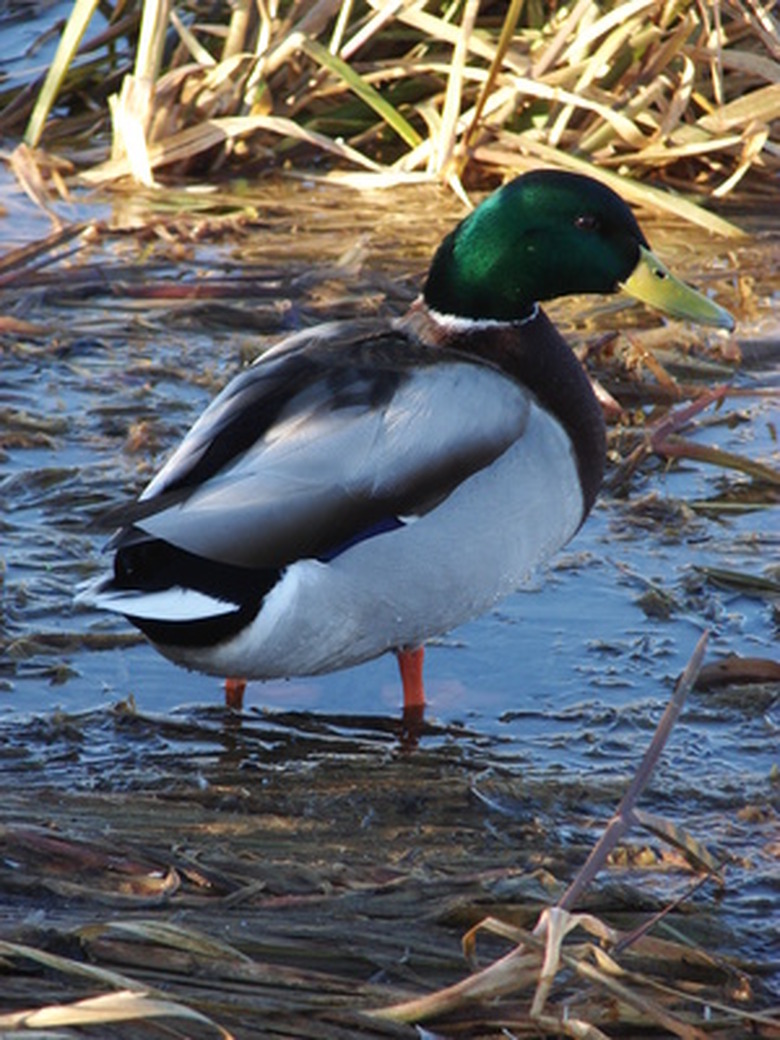Signs That A Duck Is Ready To Lay Eggs
The encroachment of industry on the environment and ecological systems directly impacts the way a mother duck takes care of her nest and hatchlings, says Bill Hopkins, an associate professor in the Department of Fisheries and Wildlife Sciences at Virginia Tech. In a study sponsored by the National Science Foundation, Hopkins and a team of researchers found that when ducks must take the time off the nest to fly further and further away for food, the embryos develop slower and hatched ducklings suffer from depressed immune systems. If you own backyard ducks or live near a duck habitat, learning the signs of a nesting duck can help you protect the brood and its surrounding environment.
Nest Site Selection
Nest Site Selection
During mating season, ducks select their nesting sites based on three areas of strategical concealment. Upland nesters and over-water nesters include waterfowl such as the mallard, pintail and ruddy duck species that are prized by duck hunters. Cavity nesters include all domestic ducks as well as wood ducks, mergansers and the goldeneye species.
Upland nesters establish territories in shallow wetlands where the hen can eat the protein-rich invertebrates that live in the water to supplement her nutrition prior to brooding. Once she has built up her reserves, she and her mate begin to look for building sites, ranging from close to the water to more than a mile away from their territory. Depending on the species, the hen nests in a rather open cover or the thickest cover available.
Over-water nesters create a platform of the reeds, cattails and bulrushes that grow at the edges of the relatively deep water of semipermanent wetlands. The hens search for areas that allow maximum protection with an easy escape route if they feel threatened. Some species of ducks make nests by folding the tops of water-bound cattails into cup shapes and allowing them to float on top of the water.
Cavity nesters find or dig out a cavity in the ground and fill it with grass and leaves to surround the eggs. They often hide their nests in high grasses or under bushes and trees. Most species of domestic ducks fall into this category.
Building a Nest
Building a Nest
Domestic ducks build nests in quiet, traffic-free areas using twigs, grass and leaves they find on the ground. Often, the hen constructs the nest in a shallow depression in the earth if she is not provided with a commercial nesting area. Prior to laying her eggs, she becomes more reclusive, starts spending more time on the nest, and will pluck down and feathers from her breast to line it, says Gail Damerow in "Barnyard In Your Backyard, A Beginner's Guide to Raising Chickens, Ducks, Geese, Rabbits, Goats, Sheep and Cattle."
Increased Nesting Time
Increased Nesting Time
Even though all of the duck eggs in the nest, called a clutch, hatch at the same time, the hen starts spending increasing amounts of time on the nest from the laying of the first egg. She arranges her body from the breast down over the area, adjusting a bare spot on her belly — called a "brood patch" – over each egg as it emerges. The brood patch contains an extra set of blood vessels that allows the blood in the hen's body to directly heat the eggs. She adjusts the temperature of the incubating eggs by moving the patch around the nest to warm each egg individually.
References
- National Science Foundation: Make Way for Ducklings
- Ducks Unlimited: Nest Site Selection
- "Barnyard in Your Backyard, A Beginner's Guide to Raising Chickens, Ducks, Geese, Rabbits, Goats, Sheep and Cattle"; Gail Damerow; 2002
- Ducks Unlimited: The Incubation Period
